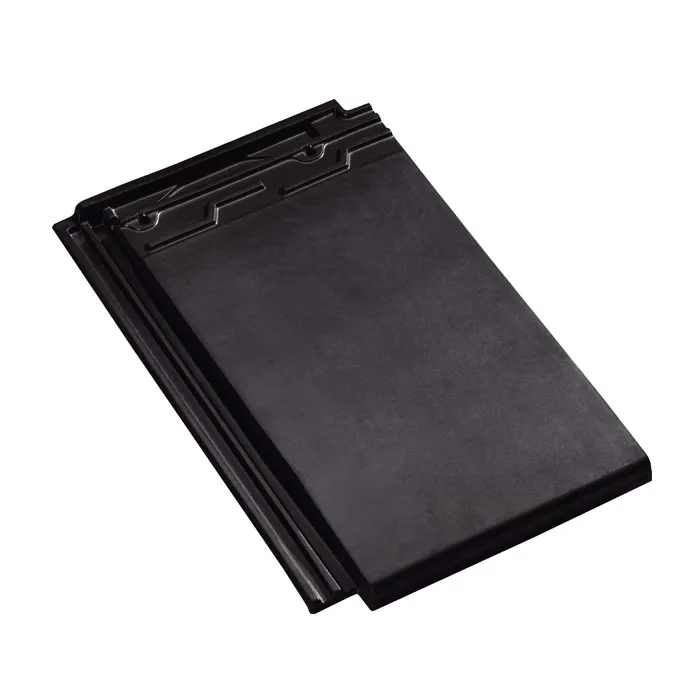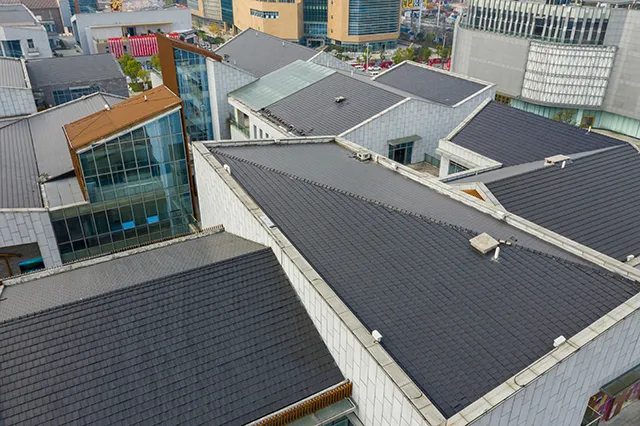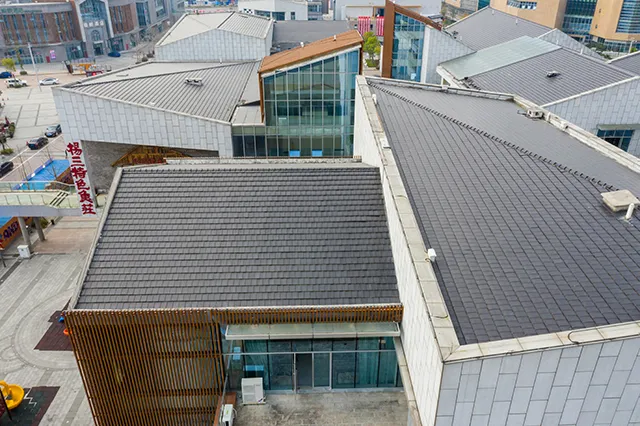Clay roof tiles are popular in many countries and regions for their durability, environmental friendliness and aesthetics. However, although clay tiles are designed to be sturdy, they are somewhat brittle. Many homeowners have to walk on their roofs when repairing, inspecting or installing other facilities (such as solar panels, antennas, etc.). At this time, the most common concern is: Will the roof be damaged and leak after walking on clay roof tiles?
This question deserves serious discussion. First, we need to understand the characteristics of clay tiles and their load-bearing capacity, then explore the problems that may occur when walking on roof tiles, and finally give some safe ways to walk on the roof to avoid damage to the tiles and roof structure.

What are the characteristics of clay roof tiles?
Material characteristics of clay tiles
Clay tiles are made of natural clay fired at high temperatures. Their advantages include corrosion resistance, UV resistance, fire resistance, good thermal insulation performance and long life. Due to the complex manufacturing process of clay tiles, the strength of the tiles is usually high, but its brittleness is also more obvious. Although clay tiles can bear a certain amount of weight, they are more likely to break when subjected to impact or concentrated pressure.
Clay tiles usually weigh between 3 and 5 kilograms each, and the design of the tiles is divided into curved tiles and flat tiles. Each tile is designed to withstand the weight of the roof and environmental pressure (such as rain, snow and wind). However, clay tiles themselves are not designed to bear the weight of the human body, which requires special attention when walking on tiles.
Clay tile installation structure
Clay tiles are usually installed on the roof structure by overlapping. The arrangement between the tiles allows rainwater to flow smoothly from the roof, thereby preventing water from entering the house. Tiles are not load-bearing alone, they rely on the roof structure below (such as rafters, purlins, etc.) for support. The lower layer of the roof is usually also paved with waterproof materials, such as waterproof membranes or asphalt rolls, to provide double protection.
Clay tiles are installed more tightly. If the tiles are stepped on or displaced, it may cause water to penetrate into the lower layer of the roof through the gaps between the tiles, causing leaks.

Will my roof leak after I walk on clay roof tiles?
Risk of cracked tiles
As mentioned earlier, clay tiles are strong, but they are also brittle. If uneven pressure is applied when walking on the roof tiles, especially when the pressure is concentrated in a small area of the tile, the tiles can easily crack. Once the tiles are cracked, rainwater may penetrate into the roof through the damage, causing leaks.
Generally speaking, the edges and joints of clay tiles are the most vulnerable points, especially when the tiles are not fixed with cement or other adhesives. The tiles may shift or loosen slightly when walking. Even if the tiles themselves do not crack, the gaps between the tiles may increase, allowing rainwater to penetrate into the lower layer of the roof.
Waterproofing failure caused by tile displacement
The waterproofing function of clay tiles depends on their proper arrangement and overlap. If the tiles are moved, the overlap between the tiles will be affected, causing the waterproofing layer to fail. Even if the displacement is small, it is possible that water can penetrate into the waterproof layer below when the rainfall is heavy, which may cause leakage in the long run.
In addition, although the waterproof material (such as waterproof membrane or asphalt membrane) under the clay tile roof can block water penetration for a short time, it is not designed for long-term exposure to water. If the waterproof function of the upper tiles fails, the lower waterproof layer may gradually age and lose its function when exposed to rain for a long time, eventually causing the roof to leak.
The impact of pressure on the roof structure
In addition to the risk of damage and displacement of the tiles themselves, the pressure exerted by the weight of the human body on the roof structure cannot be ignored. The load-bearing structure of the clay tile roof (such as purlins and rafters) is usually designed to support the tiles and the environmental pressure under the daily climate, but it is not necessarily suitable for bearing the additional weight of the human body for a long time. Especially in some places where the roof structure is relatively weak, if the force is uneven or the pressure is concentrated in a small area, it may cause structural damage.
Once the roof load-bearing structure is damaged, even if the tiles and waterproof layer are not damaged, the overall wind and water resistance of the roof will decrease, eventually leading to leakage.
How to walk safely on clay roof tiles?
Although clay tile roofs have certain risks in terms of pressure, in some cases, such as when roof inspections, equipment installations or repairs are required, it is necessary to walk on roof tiles. In order to avoid damaging the tiles during walking, it is necessary to take appropriate measures.
1. Wear suitable shoes
When walking on clay tile roofs, it is very important to choose suitable shoes. Shoes with hard soles should be avoided, especially those with sharp edges or spikes, because these shoes tend to concentrate pressure on a certain point of the tile, causing the tile to break. On the contrary, soft shoes with good anti-slip function can effectively distribute the weight and reduce local pressure on the tile.
2. Avoid stepping on the edges and joints of tiles
The edges and joints of tiles are their most vulnerable parts, so try to avoid stepping on these places when walking on the roof. To reduce damage to the tiles, try to step on the central area of the tiles, as it can better withstand pressure. In addition, keep walking lightly and slowly, and avoid sudden heavy pressure or jumping movements.
3. Use pressure-dispersing equipment
If you need to work on the roof for a long time or move a lot of heavy objects, consider using ladders, wooden boards, or other tools to spread the pressure over a larger area. Placing a wooden board on the tiles can help distribute the weight of the person, reducing the direct pressure on a single tile, thereby reducing the risk of the tile breaking.
4. Avoid working alone
When walking on the roof or performing any operation, try to avoid working alone. An extra person can provide additional help and safety, especially in the event of an accident such as a slip, fall, or finding a broken tile, another person can provide timely assistance or help repair it.

How to maintain and repair clay roof tiles?
After walking on a clay tile roof, even if there is no obvious damage, regular inspections and maintenance should be carried out to ensure the proper operation of the tiles and their waterproofing function. Here are some common maintenance measures:
1. Regularly check the condition of the tiles: Regularly check the roof tiles for cracks, displacement, or signs of damage, especially after walking or after stormy weather. Through visual inspection, any potential leaks can be discovered in time and appropriate repair measures can be taken.
2. Replace damaged tiles in time: If the tiles are found to be cracked or damaged, they should be replaced in time to prevent rainwater from seeping into the roof through the cracks. When repairing, be sure to use the same materials and specifications as the original tiles to ensure the structure and aesthetics of the entire roof.
3. Check the status of the waterproof layer: In addition to checking the tiles, the waterproof layer under the roof also needs to be checked regularly. If the waterproof layer is aged or damaged, it should be replaced or repaired in time. This can avoid further expansion of the leakage problem caused by tile failure.
4. Clean the roof debris regularly: Fallen leaves, branches and other debris will accumulate on the roof, which may affect the drainage function of the roof, thereby increasing the risk of tile damage. Regularly cleaning these debris can effectively extend the service life of the tiles while reducing the risk of leaks.
As a pioneer in the building materials industry, Foshan Rongguan Glass Material for Building Co., Ltd. (Rongguan) has been driving innovation and excellence for decades. Our expertise lies in producing premium quartz stone countertops, artificial marble surfaces, terrazzo flooring, and decorative clay roof tiles. Situated in Foshan, our factory is equipped with over 10 specialized production lines, enabling large-scale manufacturing while maintaining strict quality control. We proudly serve clients from diverse industries, including contractors, distributors, and wholesalers, providing affordable pricing and flexible customization. At Rongguan, we prioritize your needs, offering promotional discounts, timely quotes, and efficient delivery services to support your business. If you're looking for reliable suppliers of high-quality building materials, Rongguan is your trusted partner.

